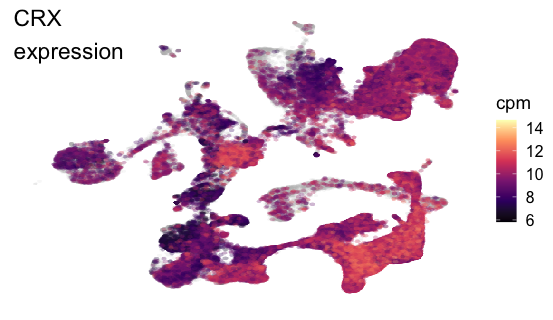Hello! I assume the picture you shared is geom_scattermost + the scale edited in by hand?
Anyway, geom_scattermost unfortunately cannot influence the guides/legends directly because its main purpose is to avoid ggplot touching the data. You can either use geom_scattermore if that's good enough (that will be slow though), or fake the data column as such:
xy <- cbind(rnorm(1000), rnorm(1000)) # data
val <- asinh(xy[,1]*xy[,2]) # color value (derived from data to look nicer)
ggsave("test.png", width=2, height=1.5, scale=2, #saves the plot
ggplot() + #no real data to plot
geom_scattermost(xy, #manually plot and color the points
col=viridisLite::inferno(100)[1+99*(val-min(val))/(max(val)-min(val))],
pointsize=4) +
geom_point(data=data.frame(x=double(0)), aes(x,x,color=x)) + # add a fake empty point-style aes
scale_color_gradientn( #add the manual guide for the empty aes
limits=c(min(val),max(val)),
colors=viridisLite::inferno(100),
name="Some value") +
ggtitle("Manual guide with geom_scattermost")
)Results in this:

Would that work?

I'm trying to implement
scattermost(seems to improved plotting time from ~2 seconds to ~1 second!), but I can't figure out how to add the scale color bar. Any tips?